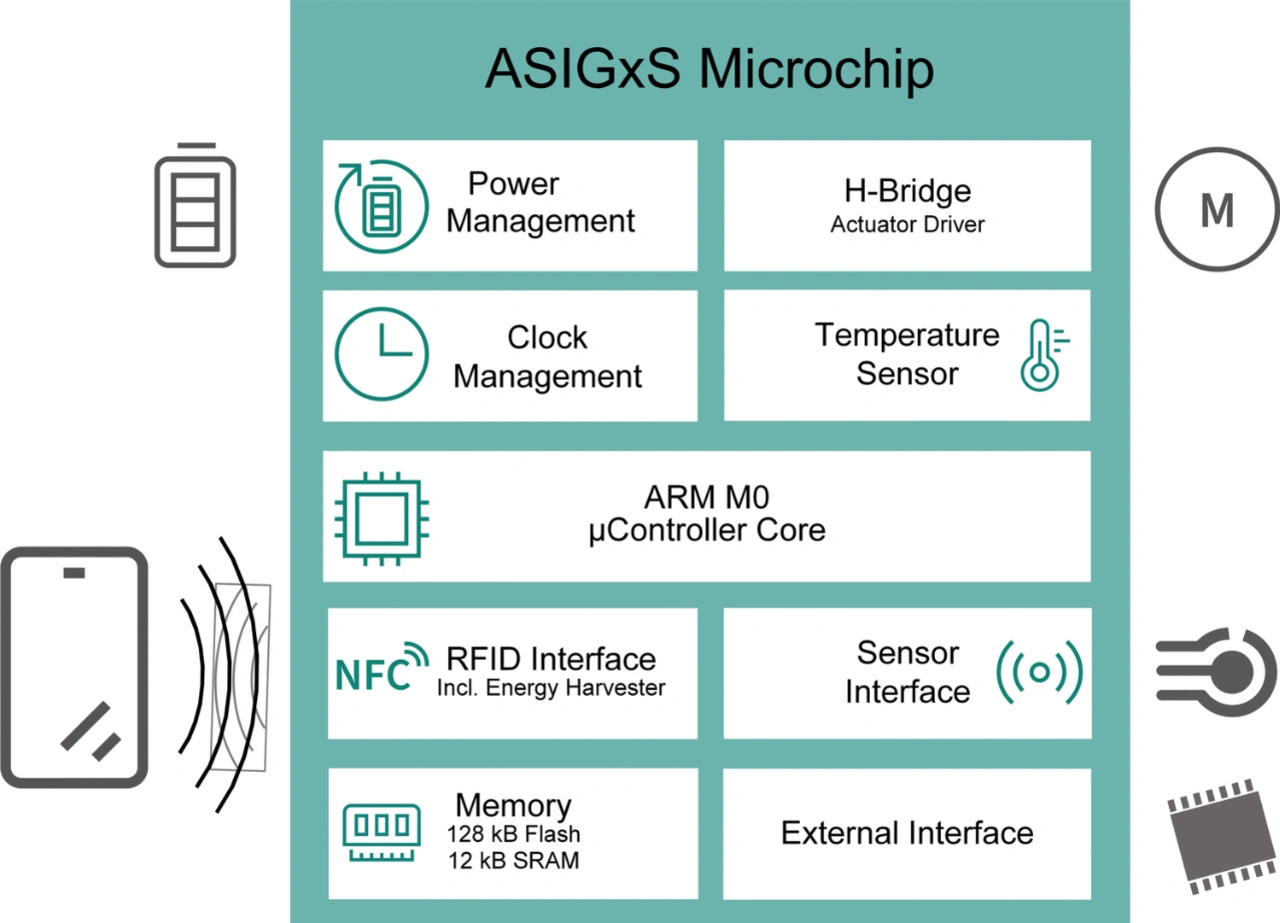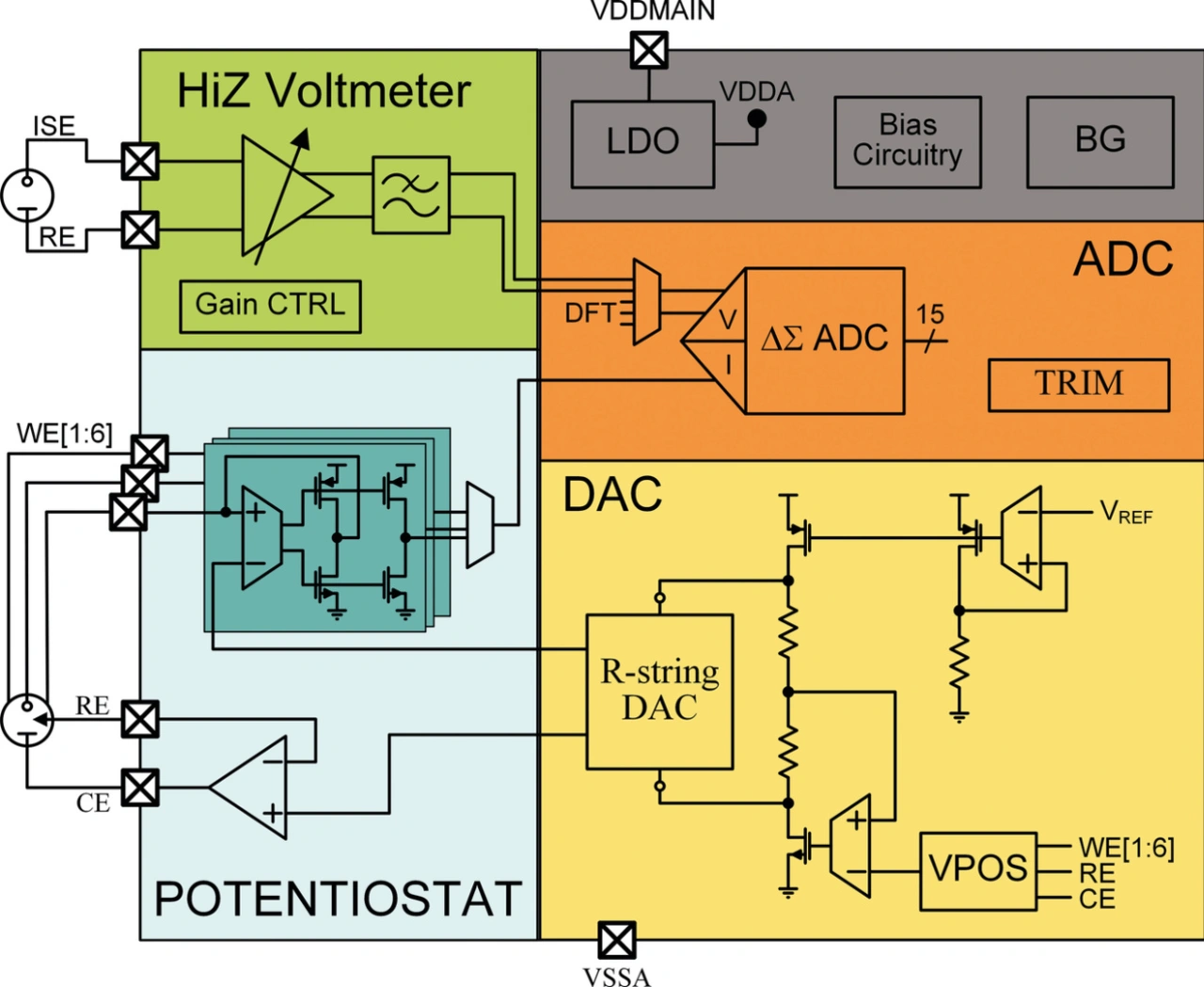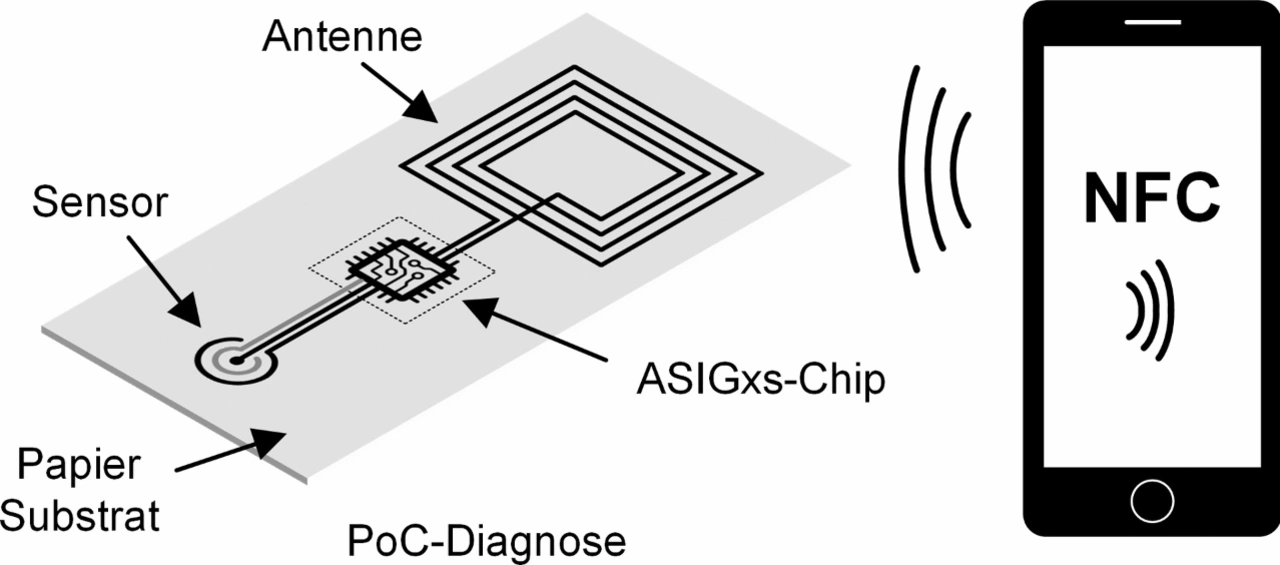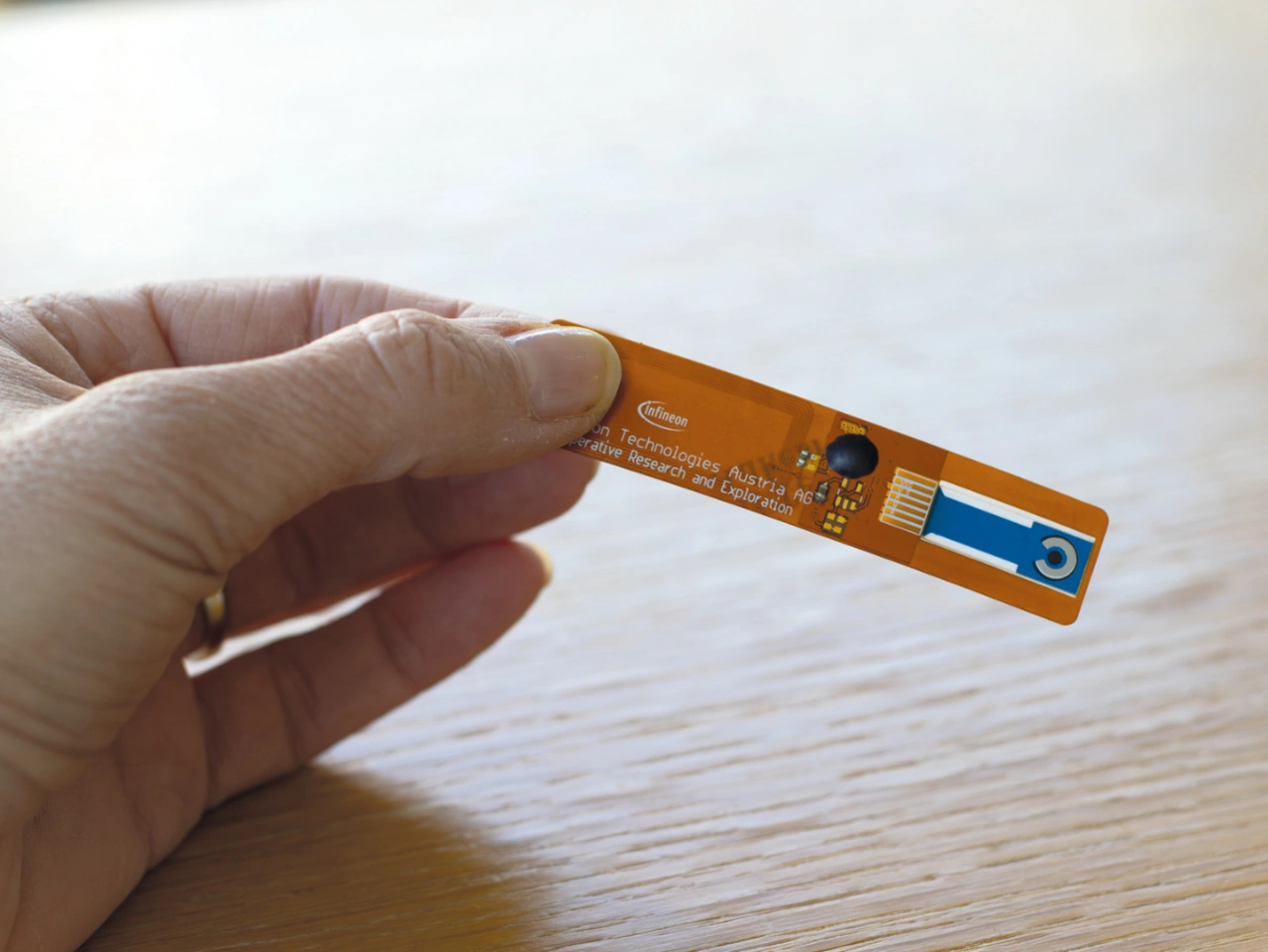Lab@Home from Infineon
Single-Chip System for Smartphone Diagnosis
Measuring lactate or blood glucose levels directly via smartphone? With an innovative single-chip system, patients can now perform medical measurements at home with unprecedented ease. The prototype addresses the fusion of medical technology and diagnostics in wearables and everyday electronics.
The number of people requiring regular medical check-ups and monitoring of their vital signs is constantly increasing, putting healthcare systems under growing pressure. The result is overburdened medical practices, long waiting times in clinics, and high costs. This unsustainable situation is eroding patient satisfaction and taking a toll on healthcare providers, who are struggling to deliver quality care to patients with chronic conditions that require regular monitoring.
Biomarker in Modern Medicine
What needs to be measured? The medical term is biomarkers, which refers to measurable indicators of biological conditions or processes in the body, either healthy or diseased. Using biomarkers, diseases can be detected early, even before symptoms appear—such as elevated inflammation values in blood. Especially for cancer, cardiovascular diseases, or brain disorders, early diagnosis significantly improves therapy outcomes and thereby the chances of recovery.
Biomarkers play a pivotal role in personalized medicine, serving as indicators that reveal individual susceptibilities to diseases, their progression, and the effectiveness of treatments, which can vary significantly from person to person. This paves the way for tailored therapies aligned with the specific biological needs of the patients. Regular monitoring of biomarkers enables doctors to efficiently track the course of a disease and evaluate the success of a treatment. Particularly for chronic illnesses or cancer, continuous monitoring of biomarkers allows optimal therapy adjustments.
The discovery of new biomarkers plays a critical role in the development of new drugs. Biomarkers help evaluate the safety and efficacy of new therapies and assess treatment precision, forming the basis for risk assessments, appropriate prevention, or necessary lifestyle changes. They contribute to preventing or at least delaying disease progression, thereby improving healthcare. However, safe, precise, and simple biomarker measurements are essential.
Research and Development for Personalized Medicine
Infineon’s research department »Explorative Research« in Graz has been collaborating closely with interdisciplinary partners in the medical field as part of research projects, focusing intensely on »biomarker detection« in recent years. Led by Gerald Holweg, the »ASIGxS« microchip prototype was developed. It integrates the circuit components necessary for multi-channel electrochemical measurements in a generic manner with a very small footprint. This high integration density not only enables revolutionary new medical-diagnostic applications but also reduces material usage and promotes environmental sustainability and climate neutrality (Green Deal), for instance, through battery-free operation.
| Interested in the prototype? |
|---|
| The diagnostic SoC is currently a prototype that cannot be ordered directly, but can be specifically adapted for individual customers. The Infineon team is interested in new use cases as well as in expanding the chip's functionalities to adapt it to individual requirements. Inquiries can be sent directly to asigxs@infineon.com. |
Diagnosis at Lab@Home
The microchip developed by Infineon enables standardized test systems, such as those used in classical laboratory diagnostics, to be brought directly to the patient through a »Lab@Home« approach. Combined with corresponding biochemical sensors (biomarker-sensitive electrode functionalization), the chip can quantify biomarkers like potassium, C-peptide, glucose, and lactate by analyzing body fluids such as blood, urine, saliva, or intercellular fluid. A CRP test can successfully distinguish between viral and bacterial infections. A temperature sensor compensates for potential temperature effects "on-chip" as an additional feature. Individual measurements are conducted via an NFC-enabled smartphone app.
Microchip Architecture for Digital Health
Miniaturization of electronic components is a crucial factor for progress and the application of new technologies in modern medicine. The Graz research team has specifically designed its test system for wireless sensor nodes. In addition to biochemistry, the application integrates numerous functions into a single system-on-chip (SoC), thereby minimizing the number of required components.
This diagnostic chip represents a significant advancement in the integration and miniaturization of electronic components for medical applications. Its comprehensive functions and high integration level contribute to the development of more compact and powerful point-of-care devices and open up new possibilities for wireless sensing in modern medicine.

Key Features of ASIGxS
The developed microchip (Figure 1) is a true multitasker. It meets the stringent requirements of modern medical applications and features a range of integrated functions, including:
-
Multi-channel potentiostatic sensor interface with various electrochemical measurement methods for simultaneous detection of multiple biomarkers
-
Energy management, including support for battery-free operation
-
Contactless (NFC) interface for communication with a smartphone
-
Microcontroller for local processing and intelligence with security features and on-chip flash memory
-
Microfluidic interface for direct micro-pump control and channel filling detection
The NFC interface is an outstanding feature, not only supporting wireless communication but also managing energy supply, charging, and energy management (energy harvesting). External devices or batteries can be charged via NFC, extending possible application possibilities fields and reducing additional charging hardware.
For medical monitoring and diagnostic devices, the six-fold sensor interface with potentiostat is one of the most vital functions. It allows up to six sensors to be connected simultaneously and enables precise measurements.
Versatile and Easily Integrable
The ASIGxS prototype also features a 16-pin digital interface that supports the simple connection and operation of displays and other digital devices. The integrated H-bridge allows for the direct control of mechanical components such as motors, valves, or pumps. The optional UHF wireless interface extends communication capabilities and enables stable wireless connections over longer distances—an essential advantage for medical applications involving spread sensors. The chip’s internal memory includes 128 kB of flash memory and is supported by an ARM Cortex-M0 microcontroller. The security of data transmission is ensured by an integrated AES co-processor, providing reliable encryption.
The Potentiostat in Detail
The block diagram of the signal acquisition chain integrated into the sensor interface (SIF) of the SoC is shown in Figure 2. The SIF contains a bidirectional, current-mirror-based potentiostat (POT) that interacts with external electrochemical sensors via three electrodes. The six-fold configuration of the WE-controlled amplifier in the potentiostat supports multi-parameter electrochemical analyses using a single SoC. The replicated sensor currents from the individual working electrodes (WE) are digitized using a Δ∑-ADC. The voltage applied by the bidirectional potentiostat to the electrochemical sensor is provided by a resistive DAC, which delivers a differential voltage. The common level can either be fixed to a specific voltage or dynamically adjusted via voltage positioning (VPOS).
Additionally, the signal acquisition chain for potentiometric electrochemical analyses is integrated into the SIF. The interface consists of a high-impedance voltmeter (HiZ voltmeter) with a fully differential, programmable pre-amplifier stage, followed by a Δ∑-ADC. The individual components of the SIF are supplied with a high-quality voltage provided by an LDO, which filters noise from the VDDMAIN supply. A bandgap reference (BG) and bias circuit generate the required reference voltages and currents for the various blocks of the SIF.

Innovative and Sustainable
The system overview of the innovative sensor node showcases a highly integrated and sustainable solution for medical applications (see schematic representation in Figure 3 and prototype realization in Figure 4). Electronics printed on a sustainable substrate are the base. "This highlights our commitment to environmentally friendly technologies and enables the development of flexible and biodegradable medical devices," says Gerald Holweg.
The centerpiece of the system is the ASIGxS chip, which is connected to application-specific functionalized electrodes. These electrodes can be customized based on the medical application to ensure accurate and reliable measurements. The chip is designed to capture and evaluate various electrochemical reactions. Energy and data transfer are conducted via a smartphone and an NFC antenna.
The NFC interface not only enables the transmission of measurement data but also powers the system, eliminating the need for external batteries or power sources and simplifying handling.

Measurements are conducted using the versatile potentiostatic interface of the ASIGxS chip, which can capture a variety of electrochemical parameters. This flexibility suits diverse medical applications and supports a range of standardized measurement methods such as (cyclic) voltammetry, amperometry, electrochemical impedance spectroscopy (EIS), and more. Thanks to precise and reliable measurements, critical health data can be collected and wirelessly transmitted to a connected smartphone for further analysis and processing.

Potential and Scope of Smartphone Diagnosis
In this chip design, the number of components required to set up an application has been minimized. Homogeneous integration avoids incompatibilities and inefficiencies at interfaces, thereby achieving a high level of energy efficiency. This also reduces costs and the use of resources.
The solution is smart, compact, and highly versatile, available in various packaging options. The presented single-chip solution (Figure 4) for easy self-testing by patients or at the point-of-care for various biomarkers offers a wide range of possible application. Beyond prophylaxis and diverse human medical applications, the diagnostic system can also be used in veterinary medicine, environmental sensing, agriculture, and water diagnostics. Thanks to the individual programmability of the chip, the range of use cases is virtually limitless. (uh)





